
COURTESY OF EAST LOS STREETSCAPERSWayne Alaniz Healy, David Botello and George Yepes (left to right) complete "Filling Up on Ancient Energies," 1980.
Murals with Chicano themes — Zapata, Che Guevara, or just brown people enjoying life — are common up and down California, but are in constant danger of disappearing.
¡Murales Rebeldes! L.A. Chicana/Chicano Murals Under Siege, a gorgeous exhibit at the California Historical Society in San Francisco (with accompanying coffee-table book), preserves these artworks, at least in photos — and reminds us that they are not just essential for art and history lovers, but prophecy.
¡Murales Rebeldes! focuses on seven case studies from SoCal—all gorgeous pieces on their own that faced censorship, desecration or outright destruction for merely existing. The photos are simultaneously inspiring and stomach-churning. Who would want to sully such beautiful things?
Roberto Chavez’s sprawling “The Path to Knowledge and the False University” was whitewashed under a gringo administration at East Los Angeles Community College and remains hidden today under a Chicano one, showing Mexicans can hate themselves even worse than Donald Trump. “Resurrection of the Green Planet” is still around, but quickly deteriorating — are there no Latino millionaires in Los Angeles who care to chip in a couple hundred thousand dollars to save it?
Orange County, unsurprisingly, provides two egregious examples. “La Historia de Adrentro/La Historia de Afuera” actually stood without incident for nearly 15 years in Huntington Beach. But because it apparently didn’t worship surfing enough, the powers that be let a new landlord paint over it without alerting the artists. Meanwhile, Sergio O’Cadiz’s 600-foot-long “Fountain Valley Mural” — which depicted an Orange County far nastier than the Disneyland-and-housewives image that OC boosters would have you believe is the norm — got the wrecking ball in 2001 after new residents in the old Orange County barrio that housed it said it was an eyesore and—unbelievably—posed a seismic risk.
An even more maddening fate befell Barbara Carrasco’s “L.A. History: A Mexican Perspective.” Commissioned to celebrate L.A.’s 1984 Olympics, this mural made up of dozens of removable panels spent most of the past three decades in a Pasadena warehouse because no one has ever ponied up enough money to give it a permanent home.
But the most poignant artifact in ¡Murales Rebeldes! has to be the photo of the ruins of “Filling Up on Ancient Energies,” a large mural painted on a gas station wall by the East Los Angeles Streetscapers in 1980. Shell Oil knocked it down in 1988 to make way for a parking lot without letting the artists know; they only found out after friends called them the morning of their artwork’s execution. Chunks were all that the Streetscrapers could salvage from the wreckage — but the artists used them as evidence to sue Shell and win a landmark civil case that gave public art more protection. If you see the exhibit at the California Historical Society, you’ll see an actual chunk of the original mural — a reminder of how endangered Chicano murals are, and how only we can save them by remaining ever-vigilant.
¡Murales Rebeldes! — L.A. Chicana/o Murals under Siege
- The California Historical Society, 678 Mission Street, San Francisco
- californiahistoricalsociety.org
- (415) 357-1848
- Through Sept. 16. $10, Free for members
- 192 pages, Angel City Press, $40

OSCAR R. CASTILLODetail from “The Path to Knowledge and the False University” by Roberto Chavez, 1974. Chavez painted the mural on the façade of Rosco C. Ingalls Auditorium at East Los Angeles College with the goal of encouraging students to join the college’s new Chicana/o Studies department. But the mural’s avant-garde design, incorporating surrealist, cartoonish, and symbolic forms in varying scales, and its challenging social messages, led to its whitewashing by the college administration
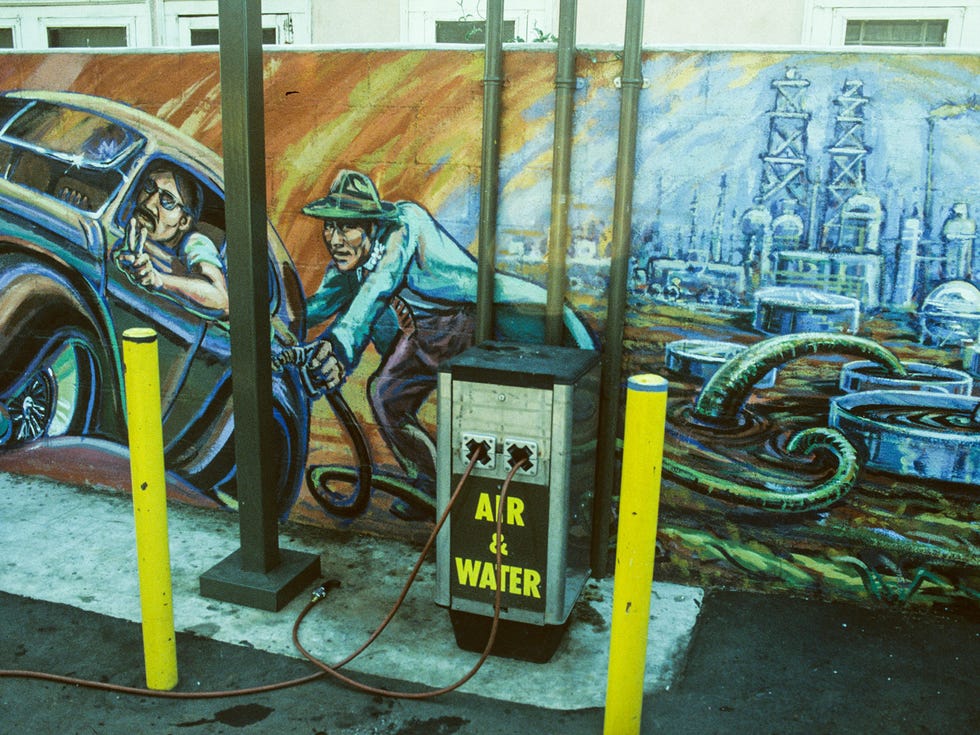
COURTESY OF EAST LOS STREETSCAPERSDetail from “Filling Up on Ancient Energies” by East Los Streetscapers, 1980.
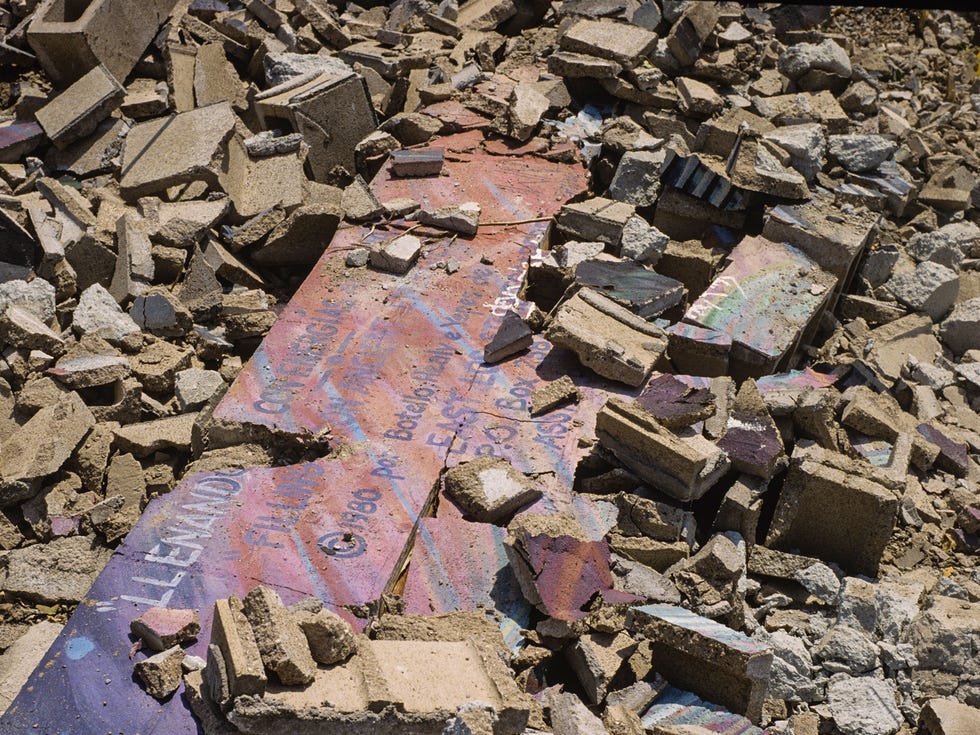
COURTESY OF EAST LOS STREETSCAPERSThe rubble remains of “Filling Up on Ancient Energies.”
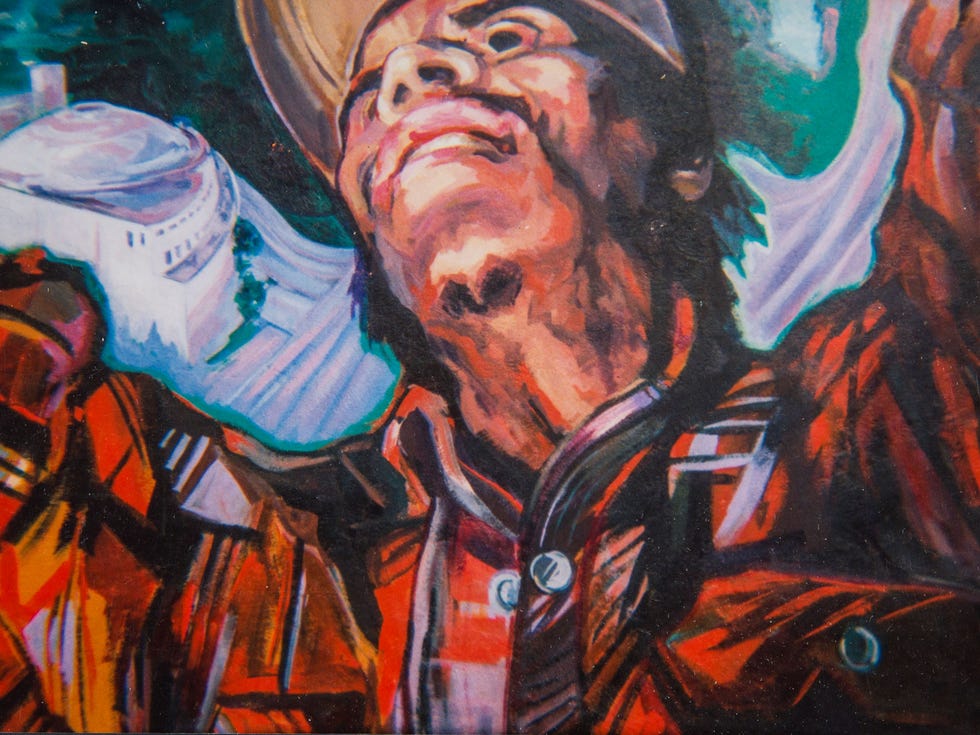
ANNIKA DAHLENIn “El Nuevo Mundo,” Ernesto de la Loza sought to show the contributions of immigrants to the city’s economic and cultural life, as these details of a heroic laborer suggest. De la Loza based his figures on actual people who worked or lived in the Echo Park community where the mural was painted. When the building’s owner sold the property to the city to make way for the Edendale branch of the Los Angeles Public Library, the artist received a commission to paint a new mural for the interior of the new library.
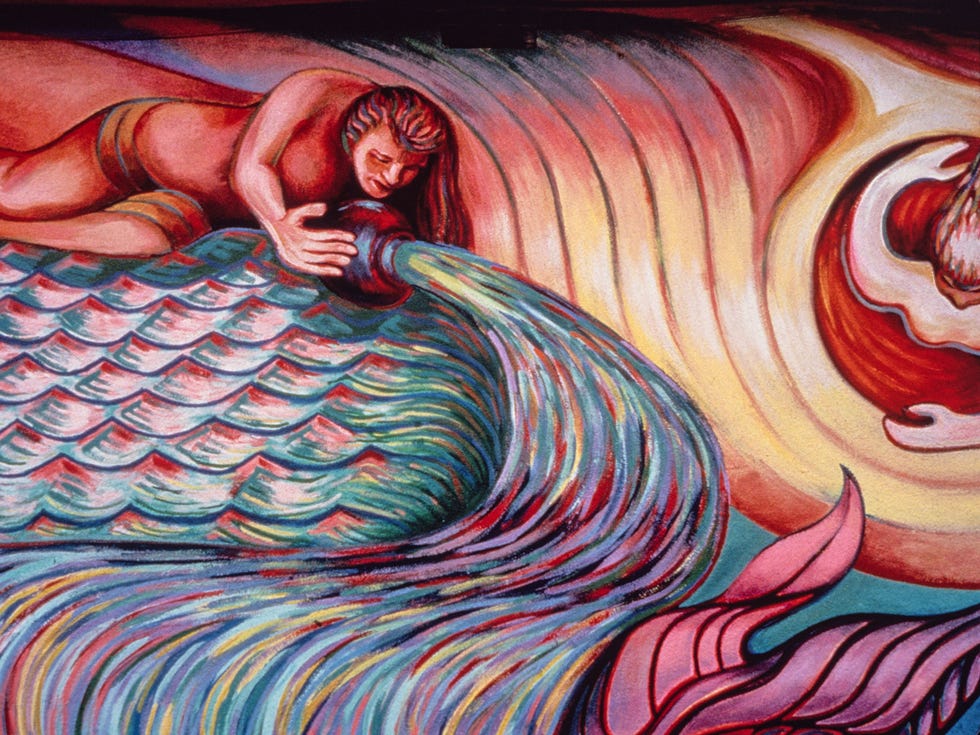
ERNESTO DE LA LOZADetail from “Resurrection of the Green Planet” by Ernesto de la Loza. The mural’s environmental message focused on the importance of protecting three of our world’s basic elements: earth, air, and water. This detail depicts a water deity replenishing the world’s oceans, rivers, and lakes. Despite restorations by the artist, the ongoing corrosion of the mural imperils its future.

COURTESY OF YREINA D. CERVANTEZModel posing in front of detail from “La Historia de Adentro/La Historia de Afuera” by Yreina D. Cervantez and Alma Lopez, 1995. The mural focuses on the contributions of the minority communities of Huntington Beach to its history. Painted on the parking lot wall of the Huntington Beach Art Center, it drew from the life stories of residents, some of whom served as models. The artists’ distinct perspective on local history was erased in 2009, when the mural was whitewashed by a new building owner.
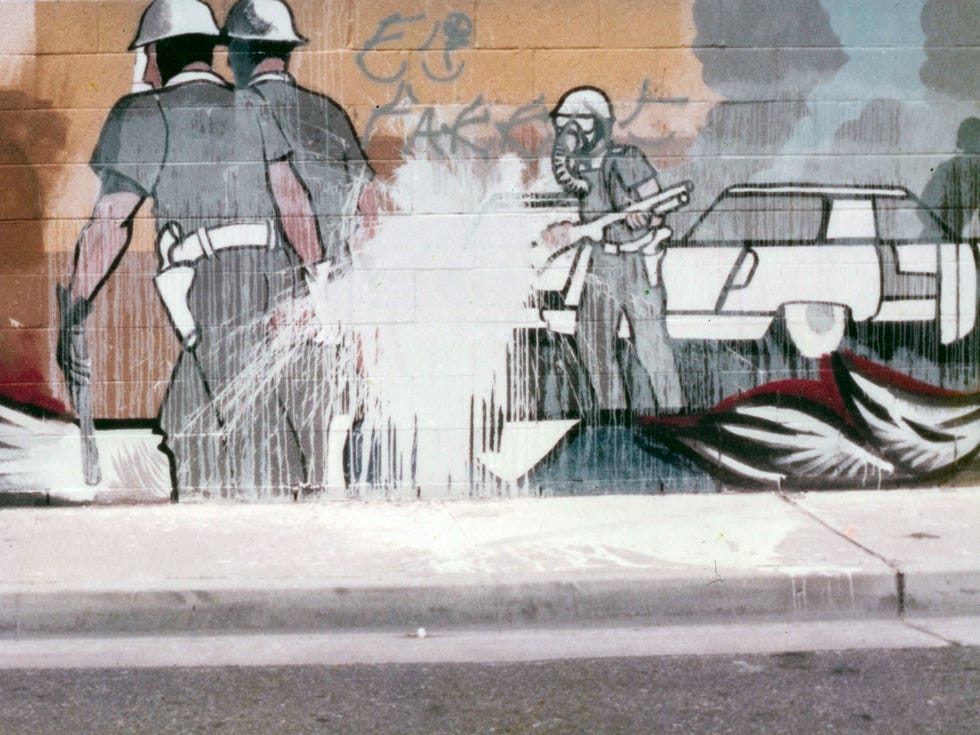
PRIVATE COLLECTION OF THE O’CADIZ FAMILYDetail from the “Fountain Valley Mural.” Early in the mural-making process, a controversy arose with the Fountain Valley Police Department over a scene depicting a young man’s arrest by police dressed in riot gear. The controversy received a significant amount of media attention, and during the dispute, someone threw a bucket of white paint at the scene. O’Cadiz chose to keep the white paint on the mural as a permanent mark of opposition and evidence of the controversy, which ultimately lead to loss of funding for the project.
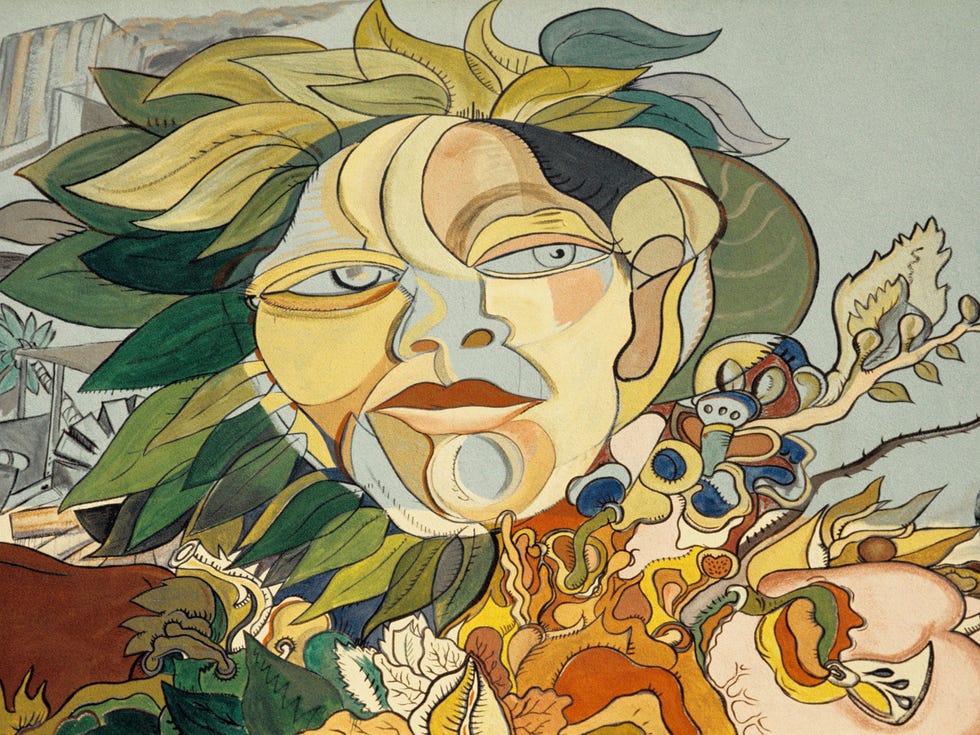
UCLA CHICANO STUDIES RESEARCH CENTERDetail from “The Path to Knowledge and the False University” 1by Roberto Chavez, 1975. An earth mother, or water goddess, is the central motif of Chavez’s mural. “My work has not been typical of Chicano artists,” Chavez has remarked. “I don’t consider myself a Chicano artist but an artist who happens to be Chicano.”
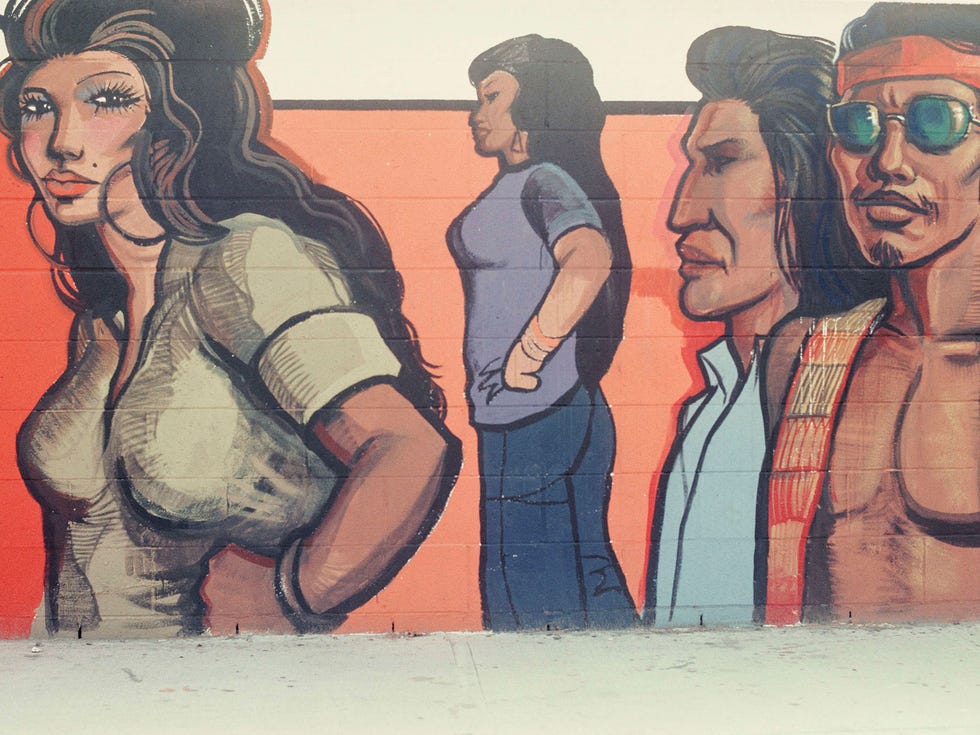
PRIVATE COLLECTION OF THE O’CADIZ FAMILYSergio O’Cadiz Moctezuma and residents of Fountain Valley’s Colonia Juarez community painted the “Fountain Valley Mural” from 1974 to 1976. The mural’s story of Mexican American heritage and history unfolded along a 625-foot-long wall separating the barrio from a newer development. Starved of funding, the mural was executed only by volunteers and was never coated in a protective sealant. In 2001, following input from city-sponsored surveys about the mural’s decay, the wall was razed and a new wall was built in its place.
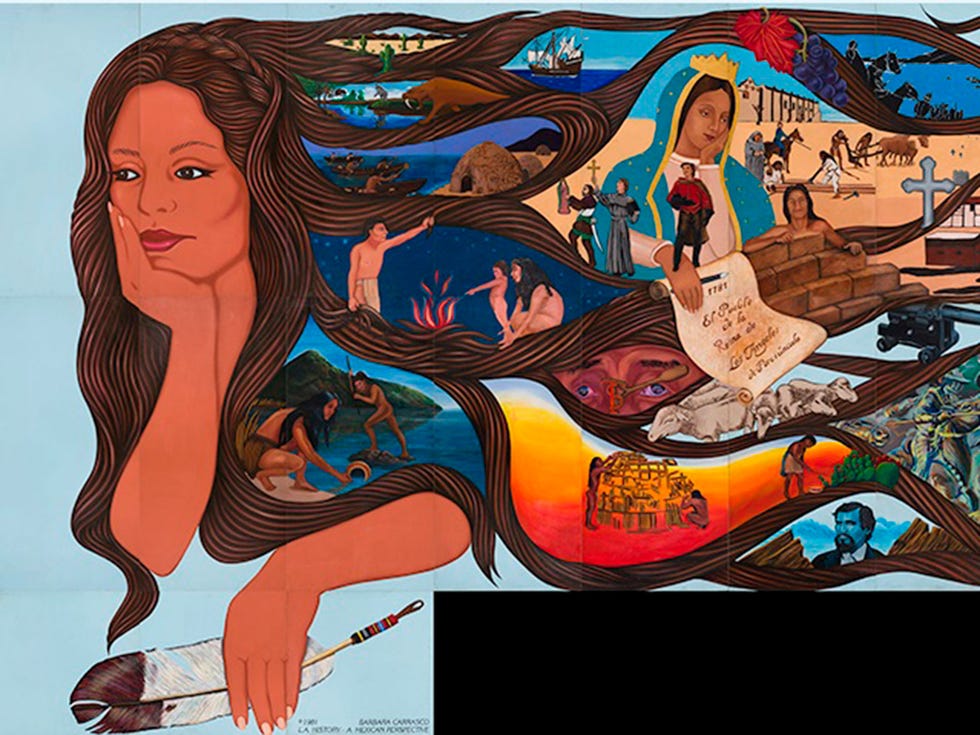
COURTESY OF CALIFORNIA HISTORICAL SOCIETY/LA PLAZA DE CULTURA Y ARTESDetail from Barbara Carrasco’s “L.A. History: A Mexican Perspective” mural, which contains 51 scenes depicting the history of Los Angeles, with an emphasis on the experiences of marginalized groups. These vignettes range from the city’s original native inhabitants and the railroad’s impact on the city’s growth to the whitewashing of David Alfaro Siqueiros’s mural “America Tropical” and the incarceration of Japanese Americans during World War II. The agency that commissioned the mural objected to Carrasco’s frank telling of history from a Chicana perspective and censored the piece.
Keep reading: “The Tide is High” is an incomplete history of Latino music in Southern California — and that’s part of its appeal

Gustavo Arellano is the author of Orange County: A Personal History and Taco USA: How Mexican Food Conquered America. In 2025, Arellano was named a Pulitzer Prize finalist for his work as a columnist for the Los Angeles Times. He was formerly editor of OC Weekly, an alternative newspaper in Orange County, California, and penned the award-winning ¡Ask a Mexican!, a nationally syndicated column in which he answered any and all questions about America’s spiciest and largest minority. Arellano is the recipient of awards ranging from the Association of Alternative Newsweeklies Best Columnist to the Los Angeles Press Club President’s Award to an Impact Award from the National Hispanic Media Coalition, and he was recognized by the California Latino Legislative Caucus with a 2008 Spirit Award for his “exceptional vision, creativity, and work ethic.” Arellano is a lifelong resident of Orange County and is the proud son of two Mexican immigrants, one of whom came to this country in the trunk of a Chevy.






















